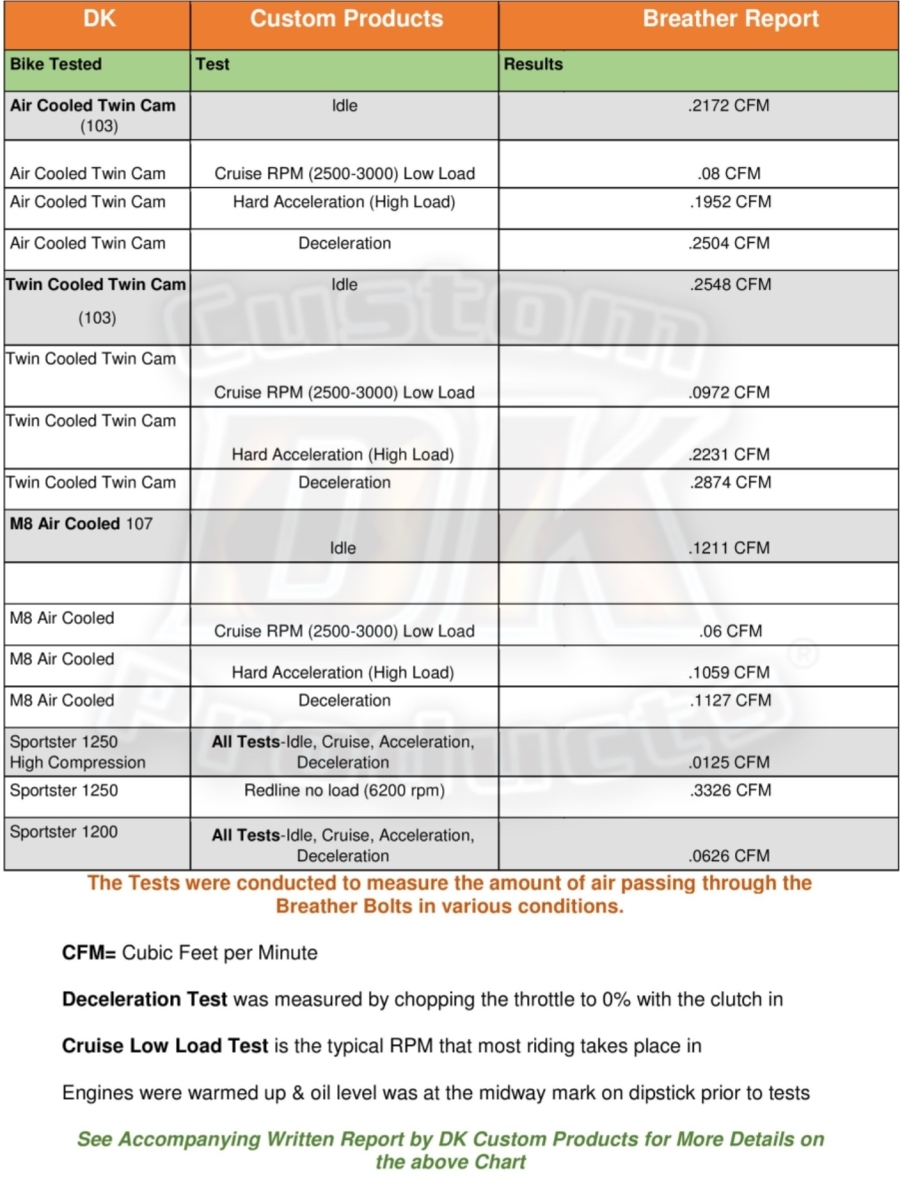Breather System Flow Testing, Results, & Video
DK Custom Products
Breather System Air Volume Test
When we embarked on designing our 4 Stage Catch-Can for External Breather Systems (EBS), we decided that the first order of business was to get accurate data on How Much Air passed through the stock Harley Breather Bolts, so we could design the best possible Catch-Can.
We wanted to know how much was passed at idle, under a load, at cruising speeds and on throttle let-off.
We also wanted to know the differences between a variety of HD engines, along with engines that had been hopped up with cams and or higher compression pistons/heads.
We searched around a bit and could find no one who had done such a study. So we decided to do one ourselves. We looked at a variety of different ways to measure the volume of air exiting the breather bolts.
In the end we decided to use a tried and true method-capturing the air, then seeing how much water volume was displaced in a fixed period of time.
Taking the liquid ounce displacement we were easily able to convert that to Cubic Feet Per Minute (CFM)
How many US fluid ounces in 1 cubic foot? 957.50649350649 fluid oz. = 1 Cubic Foot
What we discovered was surprising, and a bit counter-intuitive!
Sportsters move the Least amount of air through the breathers.*
Twin Cams move the Most amount of air through the breathers, with little difference between air cooled and Twin Cooled.
Milwaukee-Eights move More air than the Sportsters, but little more than half as much as the Twin Cams through the breathers.
Even more surprising is the least amount of air is moved on all bikes while at cruising RPM. An informal survey shows that most people thought the most amount of air moves through the breathers at higher RPM, when, in fact, the most is at idle and zero throttle decel.
The opposite is what we discovered. The most amount of air is moved through the breathers at an idle, during hard acceleration and during deceleration. A visual of this can be seen in the Video below. The actual numbers are in the charts below.
* The only way to get a significant amount of air to move through the Sportsters was to get the RPM up around redline...and that crankcase pressure was probably because the valves were beginning to float.








